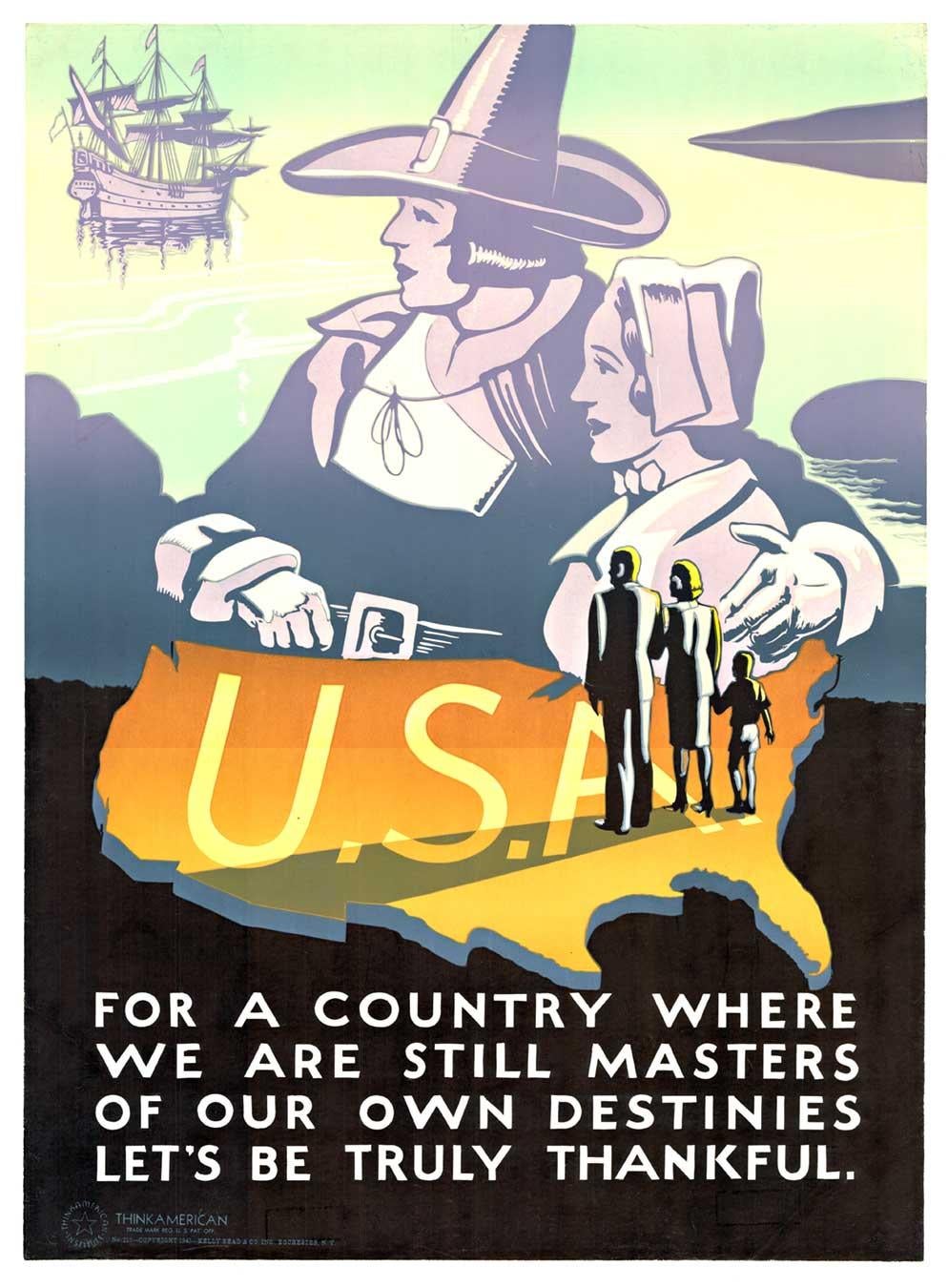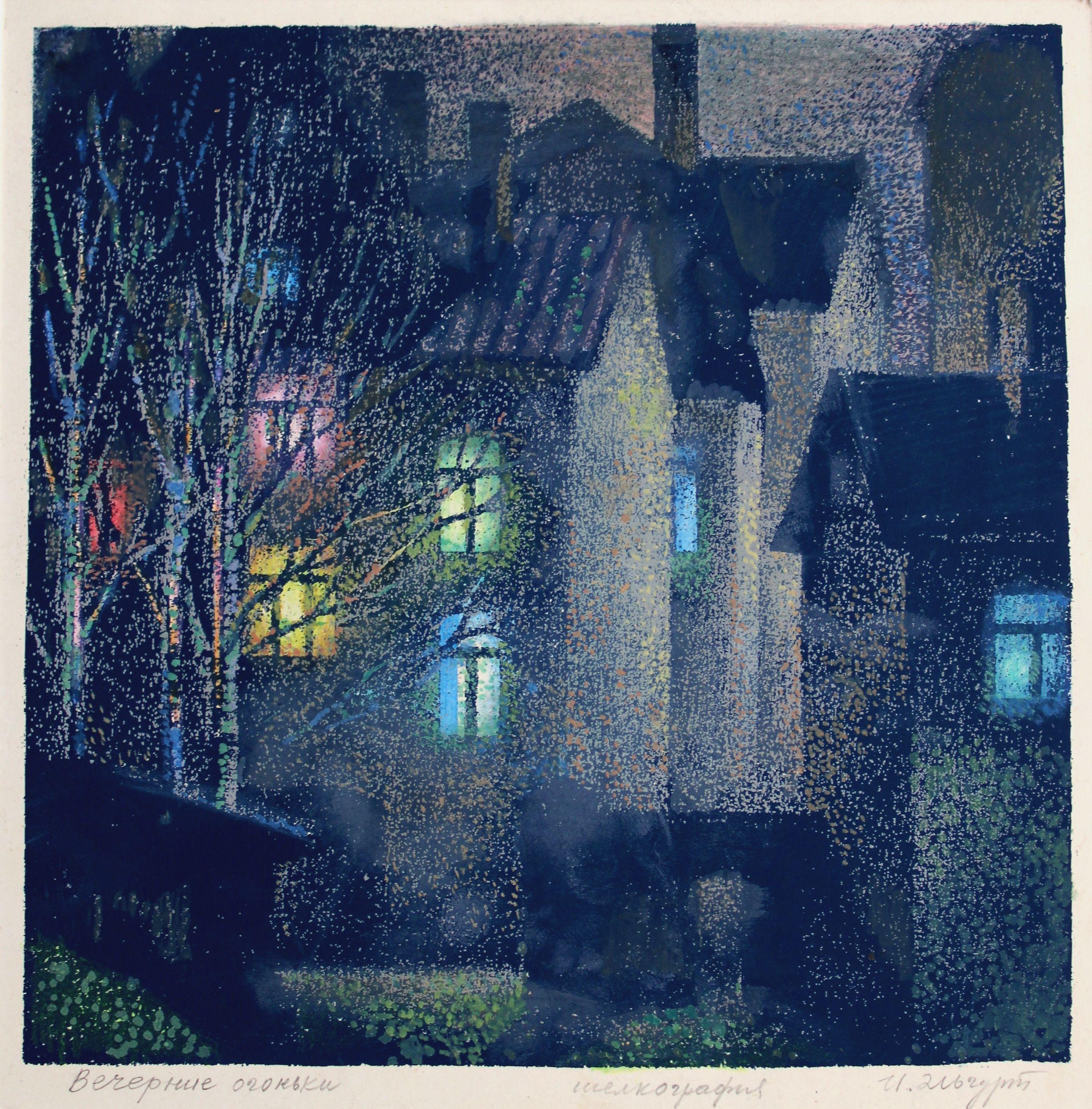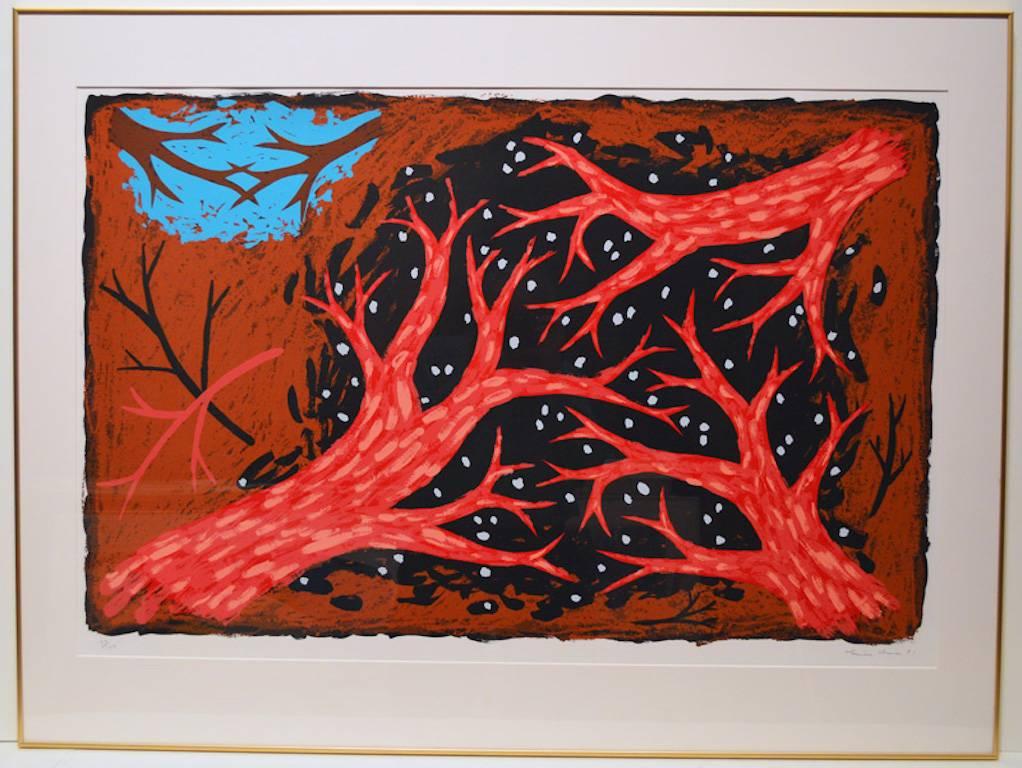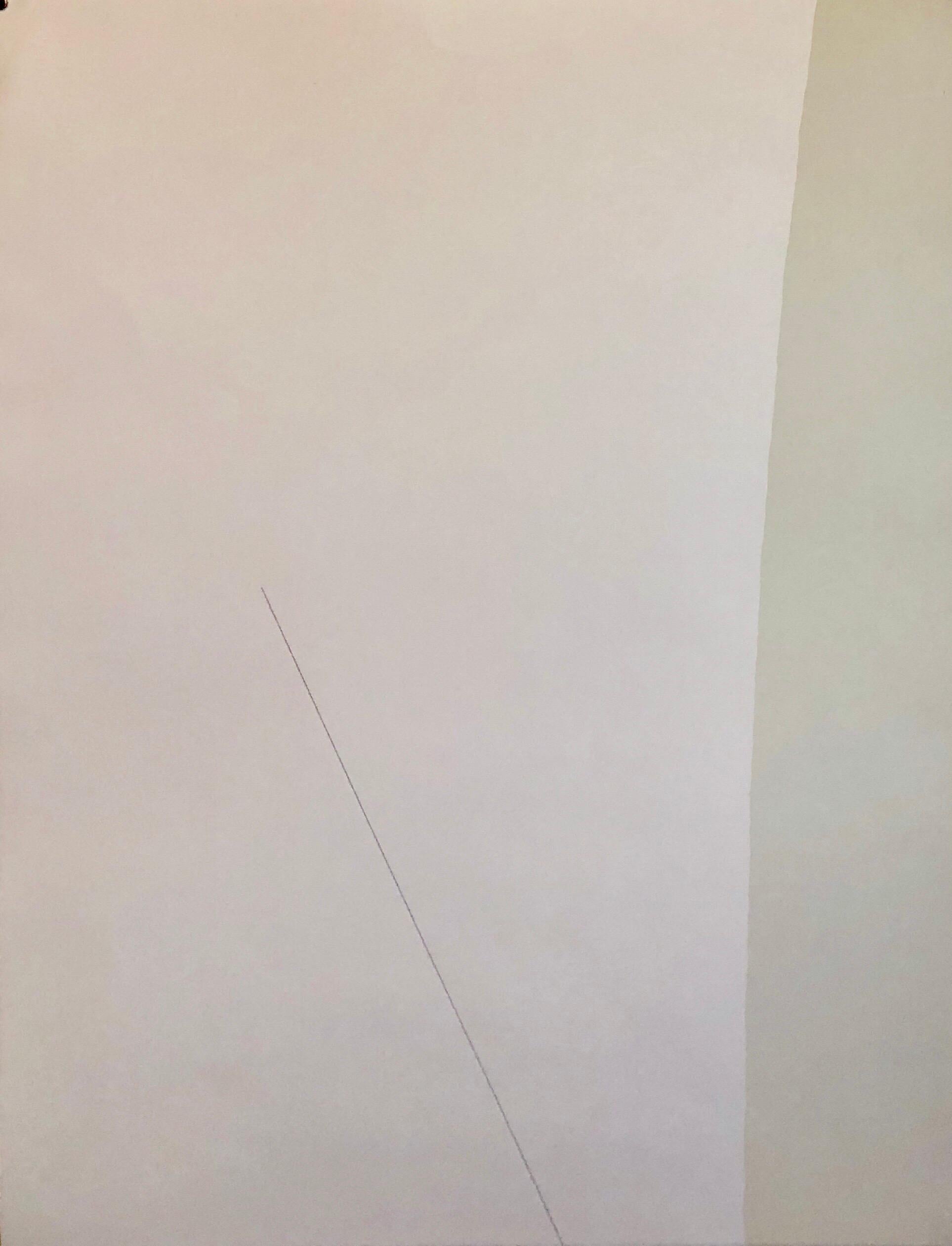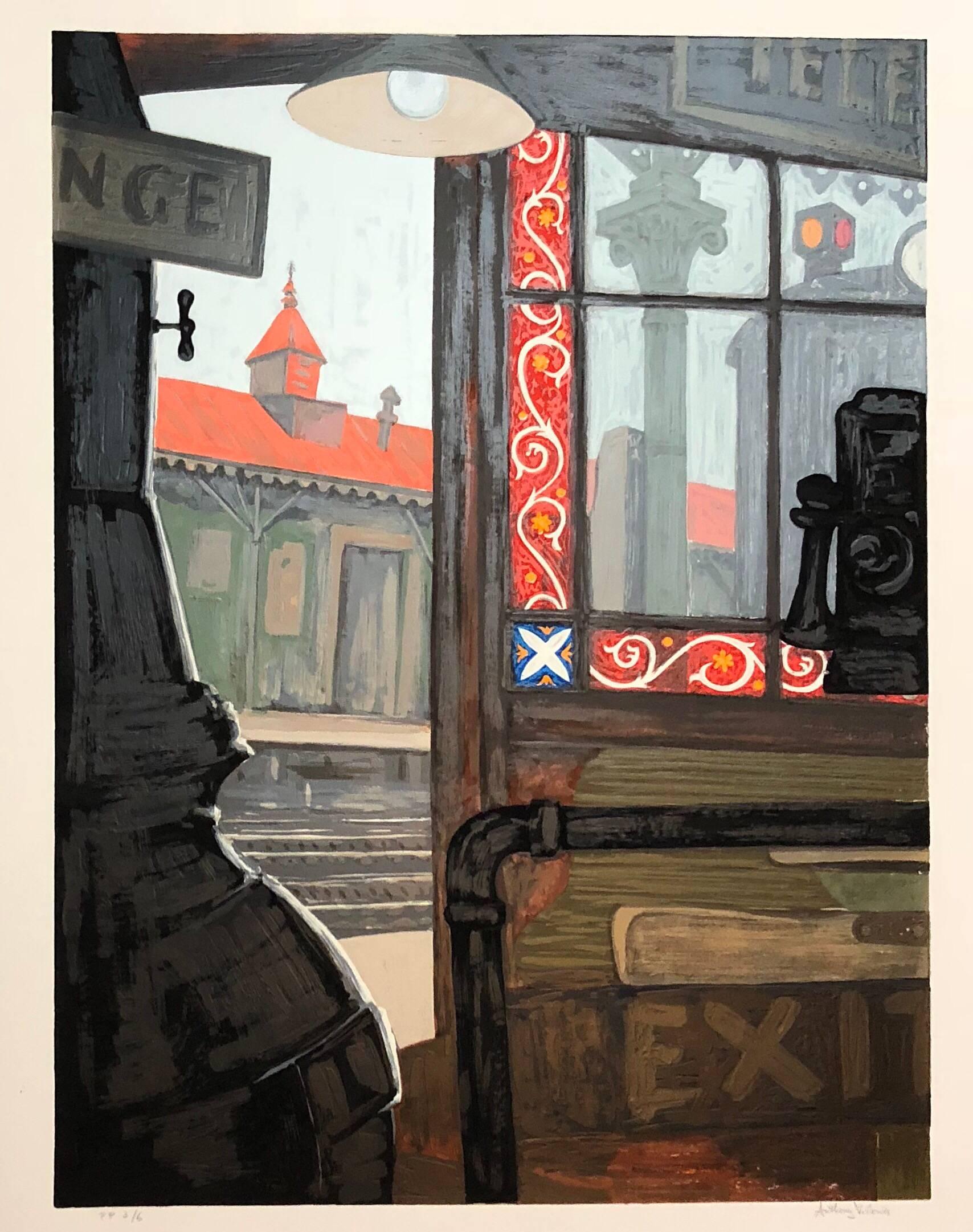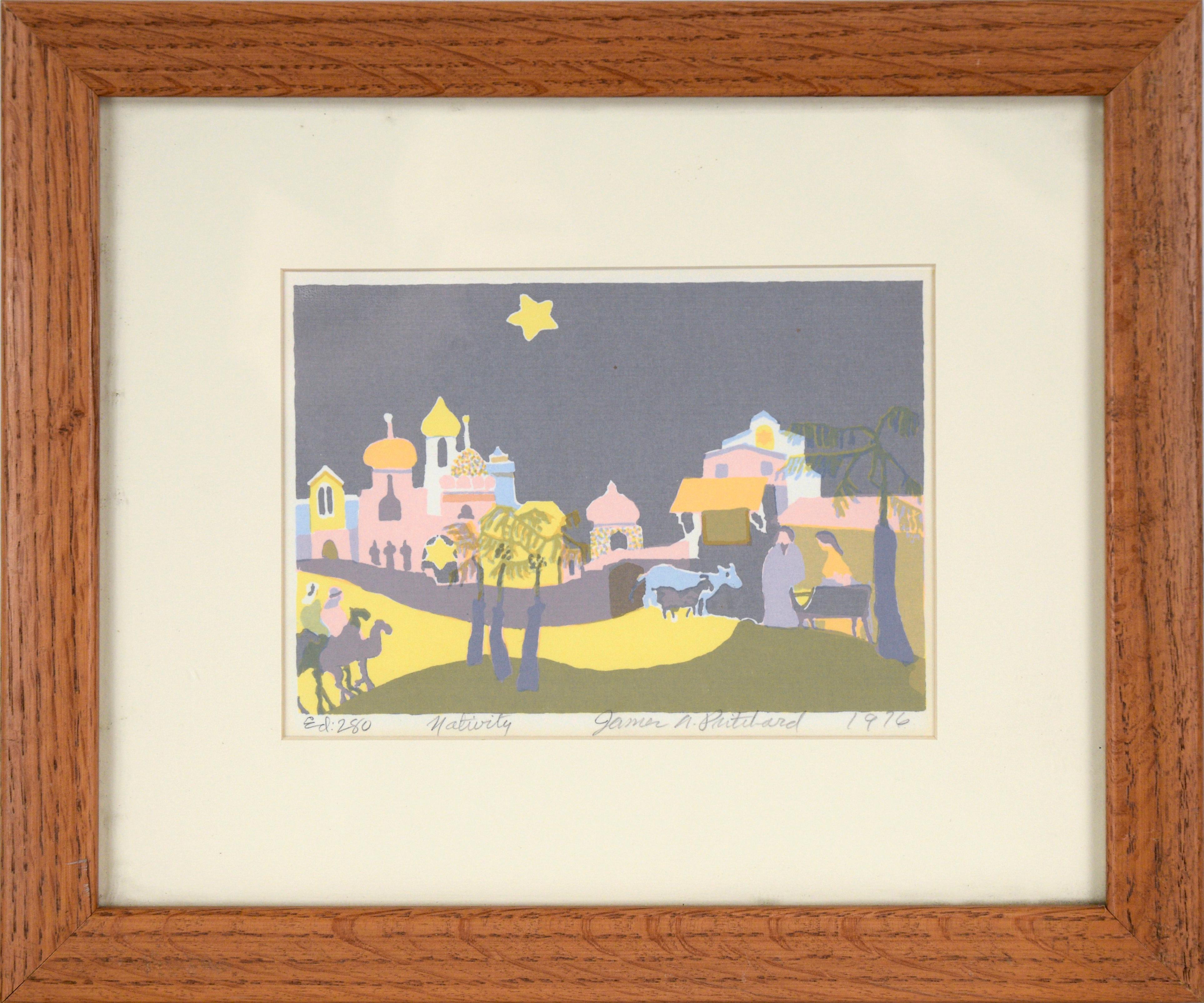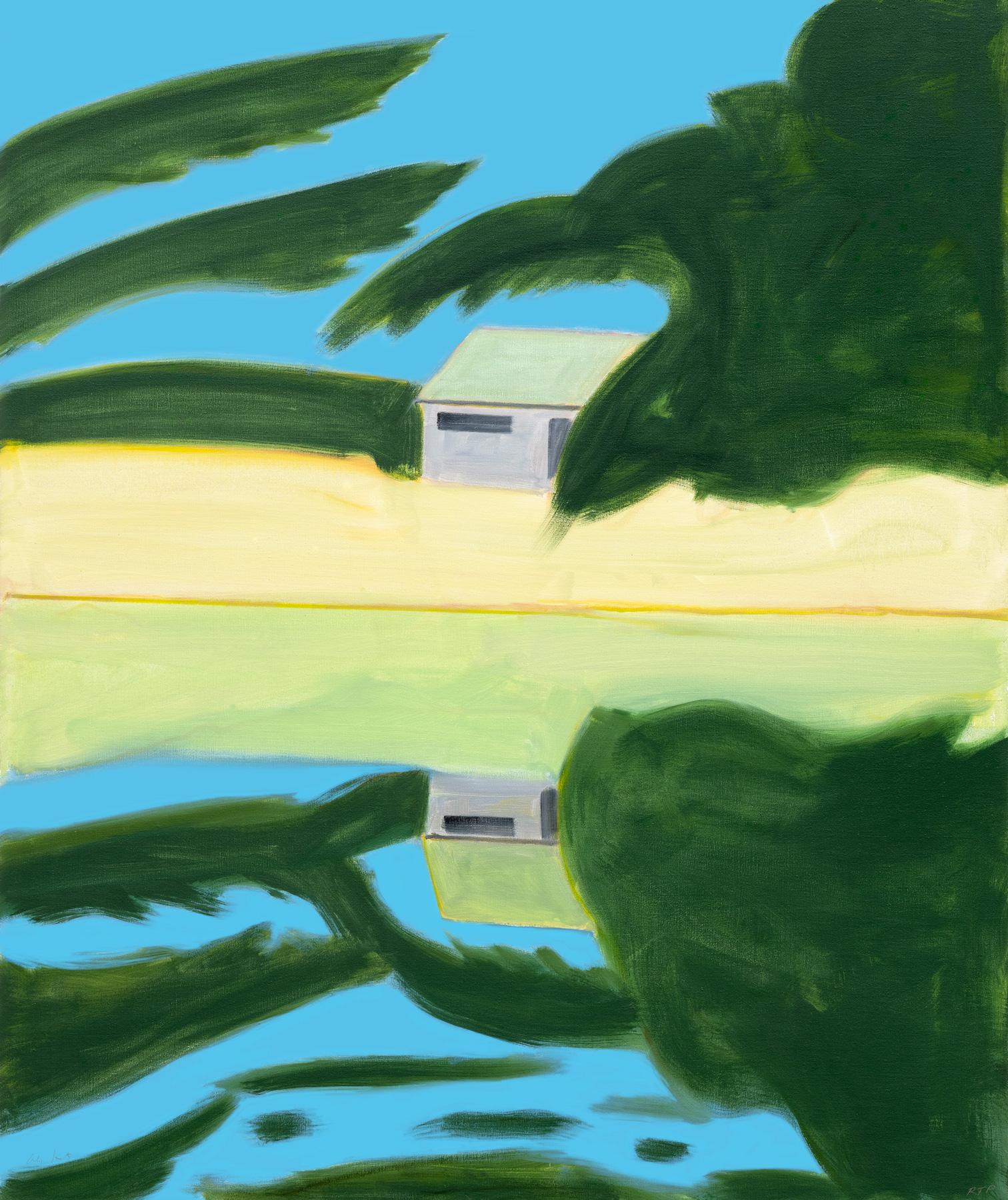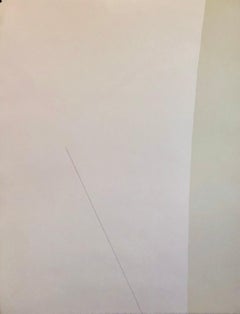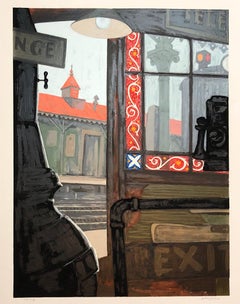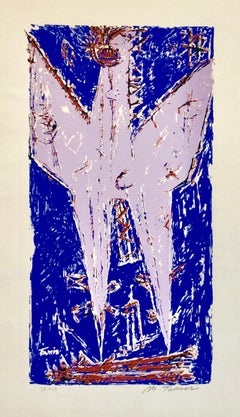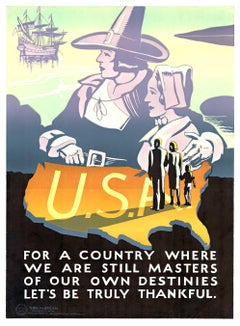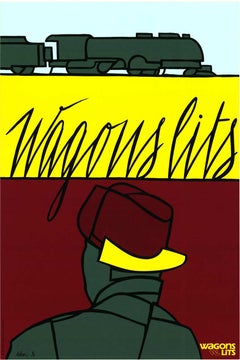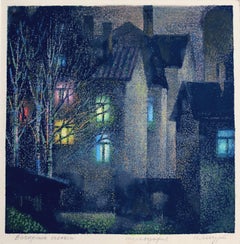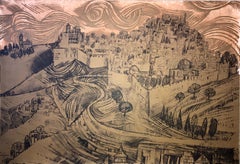
Mixed Media Jerusalem Silkscreen Serigraph Print Mounted to Wood Israeli Judaica
View Similar Items
Want more images or videos?
Request additional images or videos from the seller
1 of 10
Eliezer WeishoffMixed Media Jerusalem Silkscreen Serigraph Print Mounted to Wood Israeli Judaicac.1970's
c.1970's
About the Item
- Creator:Eliezer Weishoff (1938)
- Creation Year:c.1970's
- Dimensions:Height: 22 in (55.88 cm)Width: 30 in (76.2 cm)
- Medium:
- Movement & Style:
- Period:
- Condition:minor wear commensurate for vintage piece. please see photos.
- Gallery Location:Surfside, FL
- Reference Number:1stDibs: LU3826749612
About the Seller
4.9
Platinum Seller
These expertly vetted sellers are 1stDibs' most experienced sellers and are rated highest by our customers.
Established in 1995
1stDibs seller since 2014
1,550 sales on 1stDibs
Typical response time: 1 hour
More From This SellerView All
- Michael Gross Israeli Minimalist Conceptual Art, Abstract Jerusalem SilkscreenBy Michael GrossLocated in Surfside, FLMichael Gross (Hebrew: מיכאל גרוס; 1920 – 4 November 2004) was an Israeli painter, sculptor and conceptual artist. Michael Gross was born in Tiberias in the British-administered Palestine in 1920. He grew up in the farming village of Migdal. In 1939-1940, he left to study at the Teachers’ Training College in Jerusalem. In 1939, while he was away, his father was murdered by Arabs, and the family farm and home were destroyed. This event impacted on his work as an artist. From 1943 to 1945, he studied architecture at Technion – Israel Institute of Technology in Haifa. From 1951 to 1954, he studied art at the École nationale supérieure des Beaux-Arts in Paris. He returned to Israel in 1954 and settled in the artists’ village of Ein Hod. Gross's works are imbued with the light and spirit. They are minimalist, but never pure abstraction, always tied to natural form and laden with feeling. In his early paintings, Gross simplified form in order to concentrate on proportion, broad areas of color, and the size and placement of each element. This reductive process was also notable in his sculptures, whether in painted iron or other materials such as white concrete. In later paintings, he often juxtaposed large off-white panels with patches of tone, adding textured materials such as wooden beams, burlap and rope. Gross’s rough, freely-brushed surfaces, along with the use of soft pastel coloring, conjure up images of the Israeli landscape. Education 1936-1940 Teachers Seminary, Jerusalem 1943-1945, Technion, Haifa, architecture, studied sculpture with Moshe Ziffer. 1951-1954 Beaux Arts, Paris with Michel Guimond Teaching 1954 - 1954 Higher School of Education, Haifa. 1957-1960 Bezalel Academy of Arts and Design, Jerusalem 1960-1980 Oranim Art Institute, Tivon Awards 1964: Hermann Struck Prize 1967: Dizengoff Prize 1971...Category
1970s Modern Landscape Prints
MaterialsLithograph, Screen
- Modernist Silkscreen Screenprint 'El Station, Interior' NYC Subway, WPA ArtistBy Anthony VelonisLocated in Surfside, FLscreenprint printed in color ink on wove paper. New York City subway station interior. Anthony Velonis (1911 – 1997) was an American painter and designer born in New York City who helped introduce the public to silkscreen printing in the early 20th century. While employed under the federal Works Progress Administration, WPA during the Great Depression, Velonis brought the use of silkscreen printing as a fine art form, referred to as the "serigraph," into the mainstream. By his own request, he was not publicly credited for coining the term. He experimented and mastered techniques to print on a wide variety of materials, such as glass, plastics, and metal, thereby expanding the field. In the mid to late 20th century, the silkscreen technique became popular among other artists such as Robert Rauschenberg and Andy Warhol. Velonis was born into a relatively poor background of a Greek immigrant family and grew up in the tenements of New York City. Early on, he took creative inspiration from figures in his life such as his grandfather, an immigrant from the mountains in Greece, who was "an ecclesiastical painter, on Byzantine style." Velonis attended James Monroe High School in The Bronx, where he took on minor artistic roles such as the illustration of his high school yearbook. He eventually received a scholarship to the NYU College of Fine Arts, into which he was both surprised and ecstatic to have been admitted. Around this time he took to painting, watercolor, and sculpture, as well as various other art forms, hoping to find a niche that fit. He attended NYU until 1929, when the Great Depression started in the United States after the stock market crash. Around the year 1932, Velonis became interested in silk screen, together with fellow artist Fritz Brosius, and decided to investigate the practice. Working in his brother's sign shop, Velonis was able to master the silkscreen process. He reminisced in an interview three decades later that doing so was "plenty of fun," and that a lot of technology can be discovered through hard work, more so if it is worked on "little by little." Velonis was hired by Mayor LaGuardia in 1934 to promote the work of New York's city government via posters publicizing city projects. One such project required him to go on a commercial fishing trip to locations including New Bedford and Nantucket for a fortnight, where he primarily took photographs and notes, and made sketches. Afterward, for a period of roughly six months, he was occupied with creating paintings from these records. During this trip, Velonis developed true respect and affinity for the fishermen with whom he traveled, "the relatively uneducated person," in his words. Following this, Velonis began work with the Public Works of Art Project (PWAP), an offshoot of the Civil Works Administration (CWA), where he was assigned to serve the different city departments of New York. After the formation of the federal Works Progress Administration, which hired artists and sponsored projects in the arts, he also worked in theater. Velonis began working for the federal WPA in 1935. He kept this position until 1936 or 1938, at which point he began working in the graphic art division of the Federal Art Project, which he ultimately led. Under various elements of the WPA program, many young artists, writers and actors gained employment that helped them survive during the Depression, as well as contributing works that created an artistic legacy for the country. When interviewed in December 1994 by the Library of Congress about his time in the WPA, Velonis reflected that he had greatly enjoyed that period, saying that he liked the "excitement" and "meeting all the other artists with different points of view." He also said in a later interview that "the contact and the dialogue with all those artists and the work that took place was just invaluable." Among the young artists he hired was Edmond Casarella, who later developed an innovative technique using layered cardboard for woodcuts. Velonis introduced silkscreen printing to the Poster Division of the WPA. As he recalled in a 1965 interview: "I suggested that the Poster division would be a lot more productive and useful if they had an auxiliary screen printing project that worked along with them. And apparently this was very favorably received..." As a member of the Federal Art Project, a subdivision of the WPA, Velonis later approached the Public Use of Arts Committee (PUAC) for help in "propagandizing for art in the parks, in the subways, et cetera." Since the Federal Art Project could not be "self-promoting," an outside organization was required to advertise their art more extensively. During his employment with the Federal Art Project, Velonis created nine silkscreen posters for the federal government. Around 1937-1939 Velonis wrote a pamphlet titled "Technical Problems of the Artist: Technique of the Silkscreen Process," which was distributed to art centers run by the WPA around the country. It was considered very influential in encouraging artists to try this relatively inexpensive technique and stimulated printmaking across the country. In 1939, Velonis founded the Creative Printmakers Group, along with three others, including Hyman Warsager. They printed both their own works and those of other artists in their facility. This was considered the most important silkscreen shop of the period. The next year, Velonis founded the National Serigraph Society. It started out with relatively small commercial projects, such as "rather fancy" Christmas cards that were sold to many of the upscale Fifth Avenue shops...Category
1980s American Modern Figurative Prints
MaterialsScreen
- 1959 Israeli Moshe Tamir Color Modernist Mixed Media Serigraph PhoenixBy Moshe TamirLocated in Surfside, FLAbstract Composition, 1959 Silkscreen Lithograph "Phoenix". This was from a portfolio which included works by Yosl Bergner, Menashe Kadishman, Yosef Zaritsky, Aharon Kahana, Jacob We...Category
1950s Modern Abstract Prints
MaterialsLithograph, Screen
- Mountains, Large Pencil Signed Modernist Silkscreen Belgian IllustratorBy Jean Michel FolonLocated in Surfside, FLJean-Michel Folon was born in Brussels. He began to study architecture but abandoned it in favor of drawing, which allowed more expressive studies. His drawings have appeared in numerous magazines including Time, Fortune, The New Yorker, and L'Express. In 1969 he had his first one-man show in the United States, followed closely by exhibitions in Tokyo, Venice, Milan, London, Sao Paulo, Geneva, Brussels, and Paris. Folon has illustrated works by Kafka, Lewis Carroll, and Ray Bradbury. In 1973 he created a series of watercolors titled La Mort d'un Arbre (The Death of a Tree), for which Max Ernst created a lithograph as a preface. Folon has completed a 176-square-foot painting for a subway station in Brussels and a 160-square-foot painting for Waterloo Station in London. He is most comfortable using the engraving and drypoint techniques of printmaking. He designed theatre sets, magazine covers, advertisements, posters, wine labels, etc. Often involved in noble undertakings, such as working for world peace, for the disabled, and for safeguarding our environment, he worked on the graphic creation of the "Universal Declaration of the Rights of Man" and produced posters for Unicef, Greenpeace and Amnesty International." 1968 It conceives mural for the house of France to Triennial of Milan, animated of 500 luminous points. It exposes 60 works to the Gallery from France in Paris, and creates a book of end of the year for The Museum of Modern Art of New York. moma. 1969 First exposures to New York, Lefebre Gallery. 1970 Visit Japan and shows in Tokyo and Osaka. It takes part in XXXVè Biennale of Venice in the house of Belgium. First exposure in Italy, in Galleria del Milione in Milan, October. 1971 Carry out a significant exposure to the Museum of Decorative Arts in Paris with 90 works which will be presented later on at the Palate of the Art schools of Charleroi, the Museum of Modern art of Brussels and at Castello Sforzesco of Milan. 1972 Expose to Arts Club of Chicago. 1973 Illustrate the Metamorphosis of Kafka. Alice Editions publishes a collection of watercolours, the Death of a tree, of which he writes also the text. Max Ernst prefaces the book of an original lithography. It belongs to the selection of Belgian artists of XIIè Biennale of Sao Paulo, whose Great Price is decreed to him. 1974 Carry out ten etchings and aquatintes for the Circular Ruins of Jorge Luis Borges. Expose to Milan, the Marconi Studio. For a room of the new subway of Brussels it carries out Magic City, painting of 165 m2. 1975 Undertakes the one second mural decoration, Paysage, for Olivetti, in Waterloo Station in London. Its correspondence in images with Giorgio Soavi is the subject of a book, Lettres with Giorgio, published by Alice Editions. 1976 Expose to the Boymans-van-Beuningen Museum in Rotterdam, then in Deutsches Plakatmuseum, Essen. Carry out covers colors for various magazines, of which Time, which will publish four during years of them. 1977 Expose to Institute of Contemporary Art in London and Spoleto within the framework of XXè Festival, of which it draws the poster. 1978 Expose to the Museum of Modern art of Liege with Milton Glaser. Illustrate Alcools and Calligrammes , of Guillaume Apollinaire. 1979 Illustrate Martian Chroniques , of Ray Bradbury and the complete work of Jacques Prévert in 7 volumes. Exposure of watercolours to the Berggruen Gallery, Paris. 1980 By a series of twelve watercolours and joinings, it illustrates the Autumn in Peking, of Boris Vian, and by a continuation of etchings and aquatintes, the Useless beauty, of Guy of Maupassant. 1981 At the request of Michel Soutter, it designs the decorations of the theatre for works of Frank Martin and Giacomo Pucccini represented with the Large Theatre of Geneva. It carries out images projected for Histoire of the soldier , Igor Stravinsky, with the theatre of the Life in Brussels. 1982 The Museum from the Post office in Paris exposes its work engraved and the Museum Ingres de Montauban organizes an exposure. 1983 It carries out films in drawings in its workshop and turns of the short films to New York, Los Angeles and the Orleans News. Improvise a continuation in images, Conversation, with Milton Glaser, published by Alice Editions. 1984 Retrospective of its posters to Defense in Paris. It carries out the illustrations of the poetic of Guillaume Apollinaire and serious work a succession of etchings and aquatintes for Pluies of New York d' Albert Camus. Exposure to the museum Picasso d' Antibes. 1985 It goes to Japan for a retrospective which will be presented at Tokyo, Osaka and Kamakura. Close to the Door from Italy...Category
20th Century Landscape Prints
MaterialsScreen
- Train Silkscreen Hand Signed Belgian Modernist FolonBy Jean Michel FolonLocated in Surfside, FLJean-Michel Folon (1934- ) Jean-Michel Folon was born in Brussels. He began to study architecture but abandoned it in favor of drawing, which allowed more expressive studies. His drawings have appeared in numerous magazines including Time, Fortune, The New Yorker, and L'Express. In 1969 he had his first one-man show in the United States, followed closely by exhibitions in Tokyo, Venice, Milan, London, Sao Paulo, Geneva, Brussels, and Paris. Folon has illustrated works by Kafka, Lewis Carroll, and Ray Bradbury. In 1973 he created a series of watercolors titled La Mort d'un Arbre (The Death of a Tree), for which Max Ernst created a lithograph as a preface. Folon has completed a 176-square-foot painting for a subway station in Brussels and a 160-square-foot painting for Waterloo Station in London. He is most comfortable using the engraving and drypoint techniques of printmaking. He designed theatre sets, magazine covers, advertisements, posters, wine labels, etc. Often involved in noble undertakings, such as working for world peace, for the disabled, and for safeguarding our environment, he worked on the graphic creation of the "Universal Declaration of the Rights of Man" and produced posters for Unicef, Greenpeace and Amnesty International." 1968 It conceives mural for the house of France to Triennial of Milan, animated of 500 luminous points. It exposes 60 works to the Gallery from France in Paris, and creates a book of end of the year for The Museum of Modern Art of New York. moma. 1969 First exposures to New York, Lefebre Gallery. 1970 Visit Japan and shows in Tokyo and Osaka. It takes part in XXXVè Biennale of Venice in the house of Belgium. First exposure in Italy, in Galleria del Milione in Milan, October. 1971 Carry out a significant exposure to the Museum of Decorative Arts in Paris with 90 works which will be presented later on at the Palate of the Art schools of Charleroi, the Museum of Modern art of Brussels and at Castello Sforzesco of Milan. 1972 Expose to Arts Club of Chicago. 1973 Illustrate the Metamorphosis of Kafka. Alice Editions publishes a collection of watercolours, the Death of a tree, of which he writes also the text. Max Ernst prefaces the book of an original lithography. It belongs to the selection of Belgian artists of XIIè Biennale of Sao Paulo, whose Great Price is decreed to him. 1974 Carry out ten etchings and aquatintes for the Circular Ruins of Jorge Luis Borges. Expose to Milan, the Marconi Studio. For a room of the new subway of Brussels it carries out Magic City, painting of 165 m2. 1975 Undertakes the one second mural decoration, Paysage, for Olivetti, in Waterloo Station in London. Its correspondence in images with Giorgio Soavi is the subject of a book, Lettres with Giorgio, published by Alice Editions. 1976 Expose to the Boymans-van-Beuningen Museum in Rotterdam, then in Deutsches Plakatmuseum, Essen. Carry out covers colors for various magazines, of which Time, which will publish four during years of them. 1977 Expose to Institute of Contemporary Art in London and Spoleto within the framework of XXè Festival, of which it draws the poster. 1978 Expose to the Museum of Modern art of Liege with Milton Glaser. Illustrate Alcools and Calligrammes , of Guillaume Apollinaire. 1979 Illustrate Martian Chroniques , of Ray Bradbury and the complete work of Jacques Prévert in 7 volumes. Exposure of watercolours to the Berggruen Gallery, Paris. 1980 By a series of twelve watercolours and joinings, it illustrates the Autumn in Peking, of Boris Vian, and by a continuation of etchings and aquatintes, the Useless beauty, of Guy of Maupassant. 1981 At the request of Michel Soutter, it designs the decorations of the theatre for works of Frank Martin and Giacomo Pucccini represented with the Large Theatre of Geneva. It carries out images projected for Histoire of the soldier , Igor Stravinsky, with the theatre of the Life in Brussels. 1982 The Museum from the Post office in Paris exposes its work engraved and the Museum Ingres de Montauban organizes an exposure. 1983 It carries out films in drawings in its workshop and turns of the short films to New York, Los Angeles and the Orleans News. Improvise a continuation in images, Conversation, with Milton Glaser, published by Alice Editions. 1984 Retrospective of its posters to Defense in Paris. It carries out the illustrations of the poetic of Guillaume Apollinaire and serious work a succession of etchings and aquatintes for Pluies of New York d' Albert Camus. Exposure to the museum Picasso d' Antibes. 1985 It goes to Japan for a retrospective which will be presented at Tokyo, Osaka and Kamakura. Close to the Door from Italy...Category
20th Century Landscape Prints
MaterialsScreen
- Lunar Landscape Abstract Signed Numbered Screenprint BlackBy Len GittlemanLocated in Surfside, FLHandsigned edition of 250. Gittleman’s Lunar Transformation is a series of ten vividly colored serigraphs created from black and white photographs taken during the Apollo 15 mission ...Category
1970s Pop Art Abstract Prints
MaterialsScreen
You May Also Like
- Original "Think American" USA World War II vintage posterLocated in Spokane, WAOriginal poster: For a Country Where We Are Still Masters of Our Own Destinies, Let's Be Truly Thankful. Silk-screened patriotism. This is a poster meant to appeal to the American f...Category
1940s American Modern Figurative Prints
MaterialsScreen
- Original "Wagon Lits" pop art style serigraph travel by train posterBy Valerio AdamiLocated in Spokane, WAOriginal “Wagon Lits” serigraph poster by the artist Valerio Adami. It was printed in France by GrafiCaza (Michel Caza), one of the finest serigraph companies on woven paper—in exce...Category
1990s American Modern Figurative Prints
MaterialsScreen
- Evening lights. Paper, screen printing, 18x18 cmLocated in Riga, LVEvening lights. Paper, screen printing, 18x18 cm Evening lights is an intriguing artwork created through the screen printing technique, capturing the essence of illuminated lights d...Category
20th Century Modern Landscape Prints
MaterialsPaper, Screen
- David Hockney Will ComeBy David HockneyLocated in London, GBThis unique and stunning collection of original drawings, screenprint proofs and posters by David Hockney comprises works made to promote a lecture Hockney gave in the Percy Building...Category
1960s Modern Landscape Prints
MaterialsScreen
Price Upon Request - Long BranchBy Brad DavisLocated in New York, NYBrad Davis has exhibited at The Museum of Modern Art in New York, the New Museum of Contemporary Art in new York, the Hudson River Museum, the Uni...Category
Late 20th Century Modern Landscape Prints
MaterialsScreen, Woodcut
- Red TreesBy Louisa ChaseLocated in New York, NYLouisa Chase was born in Panama City, Panama. Seven years later, her family moved to Lancaster, Pennsylvania. She studied painting and sculpture at Syracuse University and at the Yal...Category
Early 20th Century Modern Landscape Prints
MaterialsScreen
$2,000 Sale Price20% Off
Recently Viewed
View AllMore Ways To Browse
Vintage Logos 50s
Vintage Coin Banks
Wood Judaica
Hebrew Poster
Ruth Schloss
Swiss Airline
Vintage Le Mans Poster
Jewish Serigraphs
Vintage Flora Print
Retro Bird Statue
Retro Cruise Posters
Vintage Airport Posters
Judaica Jewlery
Judaica Jewelry
Retro National Park Posters
Judaica Medal
Bezalel Bronze
Vintage Poster Nature
